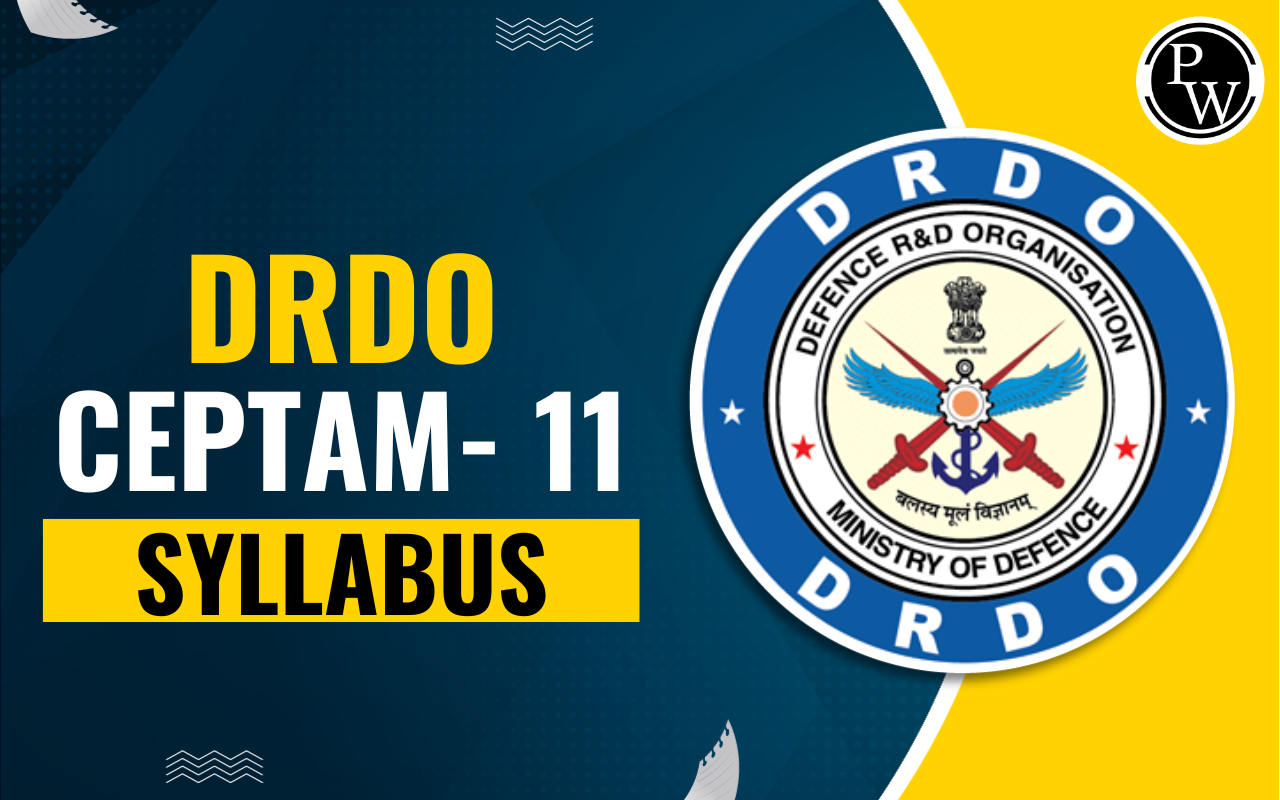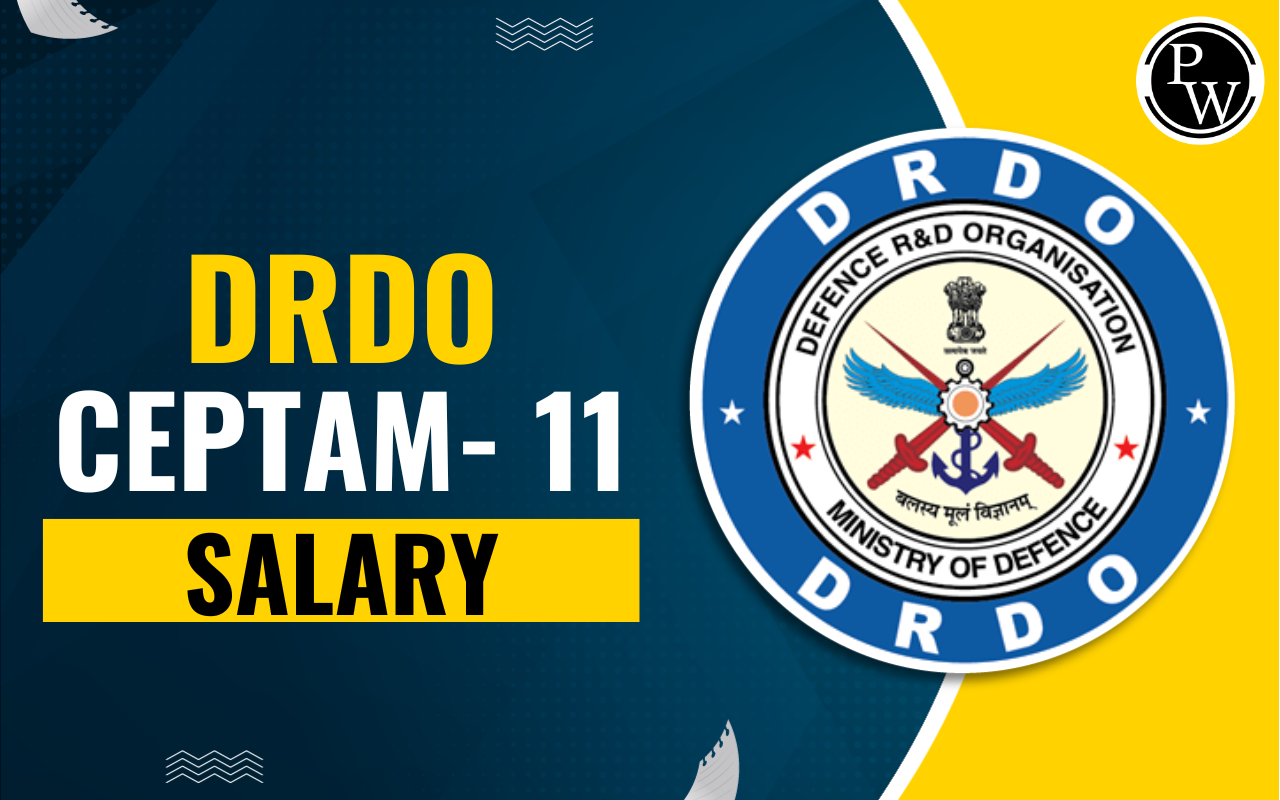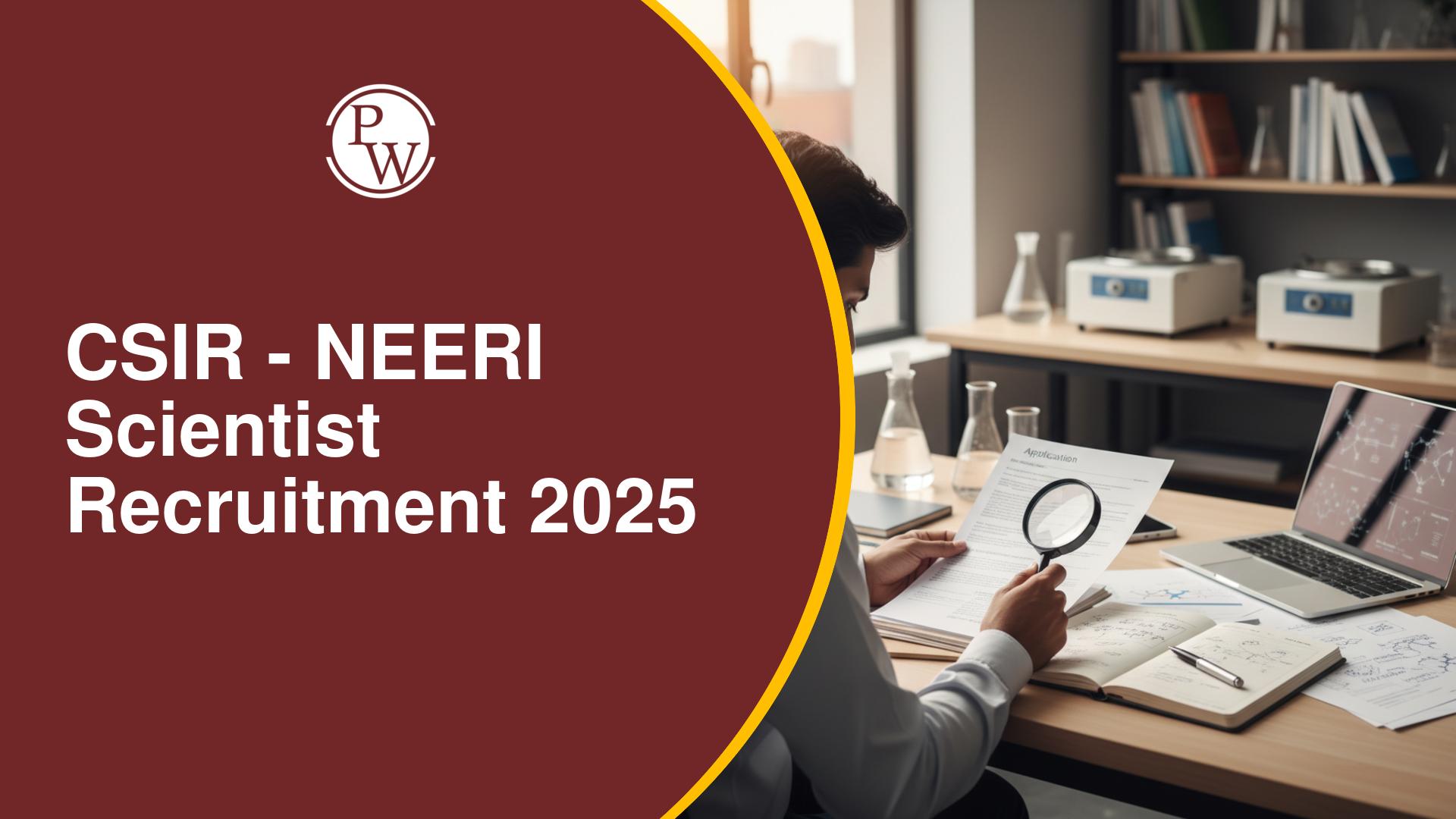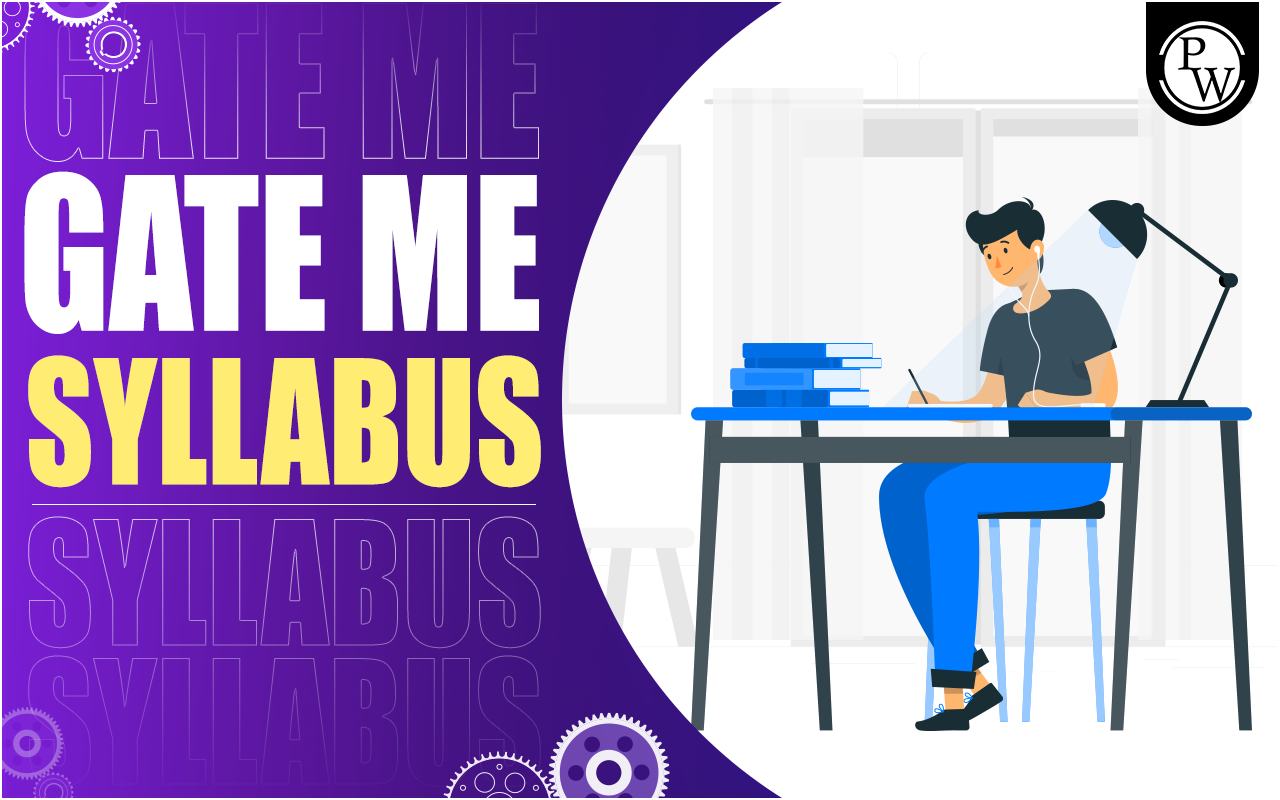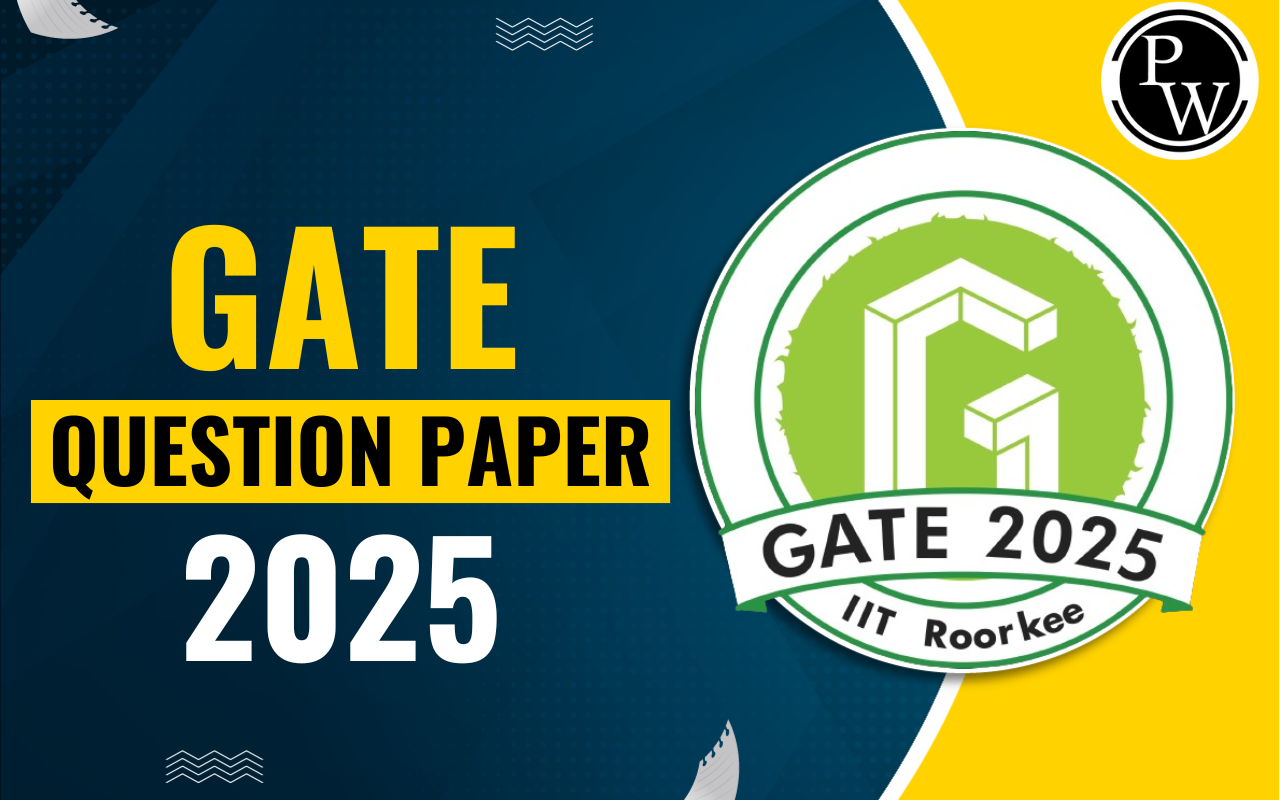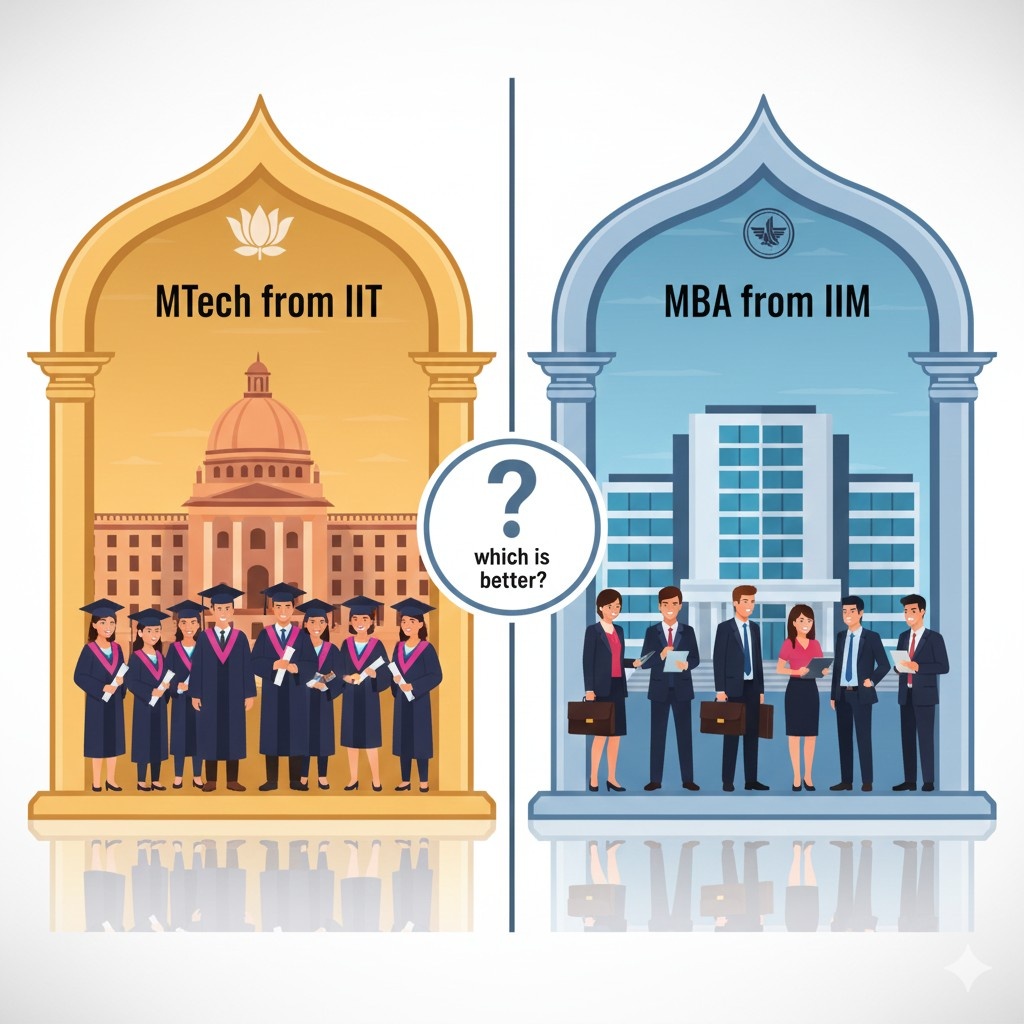
GATE ME Exam Pattern 2026: The Indian Institute of Technology Guwahati has announced the GATE ME Exam Pattern 2026 consisting of the subjects to be asked with their weightage. Candidates who want to appear in the forthcoming GATE Mechanical Exam must be well-versed with GATE Mechanical Exam Pattern 2026 to understand the paper format in a detailed manner.
The GATE Exam Pattern for Mechanical Engineering is a vital component that candidates must know to prepare well and crack the exam. The GATE Exam Pattern for Mechanical consists of the total marks, time, number of questions, marking scheme, etc.
The GATE 2026 exam will be held in February 2026(tentative) for 30 different specializations including Mechanical Engineering. In order to prepare effectively, candidates must have a thorough knowledge of the GATE ME Exam Pattern along with the GATE ME Syllabus to give the right direction to their test preparation.
GATE Exam Pattern 2026 for Mechanical Engineering
Candidates who are going to take the GATE 2026 Exam for Mechanical Engineering must be well-familiar with the GATE Mechanical Exam Pattern to grasp the layout of the question paper.Understanding the GATE Exam Pattern for Mechanical Engineering 2026 is crucial for good time management and to enhance performance. It assists applicants in allocating adequate time to various parts and prioritizing questions depending on their weightage.
Candidates might strive for an excellent GATE 2026 Mechanical exam score by developing a well-structured approach. As per the latest update, the GATE Mechanical Exam Pattern 2026 is divided into two parts:
- Paper 1: General Aptitude which is common for all subjects.
- Paper 2: subject-specific (i.e. Mechanical Engineering) and selected by the candidates while filling out the application form.
Check: GATE Mechanical Eligibility Criteria & Cut Off
GATE ME Exam Pattern
Candidates going to take the GATE 2026 Exam for Mechanical Engineering must understand the exam pattern in detail to get familiar with the number of questions, maximum marks, exam duration, and more. The officials of conducting authority i.e. IIT Guwahati will unveil the GATE ME Exam Pattern 2026 at its official website. Aspirants must go through this article to understand the GATE Mechanical Engineering Exam Pattern in detail.
GATE ME Exam Pattern 2026 Highlights
Before going through the complete GATE ME Exam Pattern 2026, let’s first explore the general overview of the GATE Mechanical Paper Format 2026 from the below table:
| GATE Mechanical Exam Pattern 2026 Overview | |
| Particulars | Details |
| Exam Name | GATE Mechanical Exam 2026 |
| Mode of Exam | Online CBT mode |
| Exam Timing | 3 hours |
| Maximum Marks | 100 |
| Number of Subjects | 30 |
| Total number of Questions | 65 |
| Sections | General Aptitude (GA) & Mechanical Engineering |
| GATE Marking Scheme | All the questions carry 1 or 2 marks |
| Marks Distribution ME Papers |
|
| Total Number of Questions |
|
| Negative Marking |
|
| Type of Questions |
|
Check: GATE Mechanical Engineering Notes
| GATE 2026 Branch Wise Exam Pattern | |
| GATE DA Exam Pattern | GATE CSE Exam Pattern |
| GATE Electrical Engg Exam Pattern | GATE ECE Exam Pattern |
| GATE Civil Engg Exam Pattern | GATE Chemical Engg Exam Pattern |
GATE Mechanical Engineering Paper Format 2026
The Graduate Aptitude Test in Engineering (GATE) is renowned for its various question forms. The GATE mechanical engineering paper pattern 2026 employs to evaluate applicants' thorough knowledge of numerous engineering topics: Here are the various types of questions to be asked in the GATE Mechanical Paper 2026:
MCQs (Multiple-Choice Questions)
- In MCQs, applicants are given a question and four possible answers denoted by the letters (A), (B), (C), and (D).
- Candidates must select the response that best satisfies the question's requirements.
- The proper choice must be made by marking the relevant bubble or clicking on the item on the computer screen.
MSQs (Multiple-Selected Questions)
- Multiple correct answers are given for each question in MSQs.
- Candidates must choose the appropriate alternatives by marking the proper bubbles or clicking on the selections.
- Depending on the instructions for the question, candidates could only get credit for choosing some of the correct answers.
Numerical Answer Types (NATs):
- Candidates for NATs must input a numerical value utilizing the computer's virtual numeric keypad as their response.
- Candidates must compute the answer and type it in the required manner.
- NATs are not given any alternatives or choices.
- To get full credit, the response needs to be typed in precisely.
GATE Mechanical Engineering (ME) Marking Scheme 2026
It is essential to fully comprehend the GATE Mechanical Engineering (ME) Marking Scheme 2026 to understand the exam paper pattern fully. Candidates can develop successful tactics and evaluate the marks given to each question by analyzing the marking scheme, which offers insights into the weightage allotted to specific questions.
The GATE exam paper marking scheme for mechanical engineering is described below:
GATE ME Marking Scheme 2026 for General Aptitude
There are 10 questions in the general aptitude area of the GATE exam, and all questions are worth 15 marks. 5 of these questions will be for 1 mark each, while the remaining 5 will each be worth 2 marks.
GATE ME Marking Scheme 2026 for Mechanical Engineering
According to the official website, the following marking system will be used for the GATE Exam Paper Pattern for ME
- 55 total questions
- Total 85 marks
Based on their scores, the questions are divided into two categories:
- 1-Mark Questions - There will be 25 questions carrying 25 marks. Each answer is worth 1 mark.
- 2-Mark Questions - 30 questions will be asked carrying 60 marks (each question is worth 2 marks).
Important Note - Multiple-Choice Question (MCQ) style questions make up most of the questions in these papers.
| GATE Mechanical Engineering (ME) Marking Scheme 2026 | |||||
| Subject Code/Name | No. of Questions | Marks Distribution | Marks | Negative Marking | Total time |
| General Aptitude | 10 | (5 x 1) + (5 x 2) | 15 |
|
3 hours (180 Minutes |
| ME (Mechanical Engineering) | 45 | (25 x 1) + (30 x 2) | 72 | ||
| Engineering Mathematics | 10 | 13 | |||
| Total | 65 | 100 | |||
GATE Mechanical Paper Pattern 2026 - Negative Marking
A key component of the GATE scoring system is GATE Mechanical Negative Marking. A portion of the awarded marks will be subtracted as a penalty for each wrong answer given in the MCQs. The following is the MCQ negative marking policy for GATE Mechanical Paper Pattern 2026.
- For each incorrect response to a 1-mark question, 1/3 mark will be removed.
- For each incorrect response to a 2-mark question, 2/3 of the total mark will be removed.
Important Note:
- Candidates should use caution when answering MCQs and refrain from guessing at random because wrong answers might considerably reduce scores.
- Unanswered Questions - There is no deductible marking for unanswered questions. If a candidate is unsure about the correct answer to a question, they might decide not to attempt it. However, it is advised for candidates to attempt all of the questions they feel somewhat confident about, as a correct response might increase their final score.
GATE Mechanical Engineering Syllabus 2026
Along with the GATE Exam Pattern, candidates also have better knowledge of the GATE ME Syllabus 2026 . Candidates preparing to ace the GATE Exam 2026 must explore the detailed topic-wise syllabus mentioned in this section:
| GATE Syllabus for Mechanical Engineering | |
| Section 1: Engineering Mathematics | |
| Linear Algebra | Matrix algebra, systems of linear equations, eigenvalues, and eigenvectors. |
| Calculus | Functions of a single variable, limit, continuity, and differentiability, mean value theorems, indeterminate forms, evaluation of definite and improper integrals, double and triple integrals, partial derivatives, total derivative, Taylor series (in one and two variables), maxima and minima, Fourier series, gradient, divergence and curl, vector identities, directional derivatives, line, surface and volume integrals, applications of Gauss, Stokes, and Green’s Theorems. |
| Differential equations | First-order equations (linear and nonlinear), higher-order linear differential equations with constant coefficients, Euler-Cauchy equation, initial and boundary value problems, Laplace transforms, solutions of heat, wave, and Laplace's equations. Complex variables: Analytic functions, Cauchy-Riemann equations, Cauchy’s integral theorem, integral formula, Taylor, and Laurent series. |
| Probability and Statistics | Definitions of probability, sampling theorems, conditional probability, mean, median, mode and standard deviation, random variables, binomial, Poisson, and Normal Distributions. |
| Numerical Methods | Numerical solutions of linear and non-linear algebraic equations, integration by trapezoidal and Simpson’s rules, single and multi-step methods for differential equations. |
| Section 2: Applied Mechanics and Design | |
| Engineering Mechanics | Free-body diagrams and equilibrium, friction and its applications including rolling friction, belt-pulley, brakes, clutches, screw jack, wedge, vehicles, etc., trusses and frames, virtual work, kinematics, and dynamics of rigid bodies in plane motion, impulse, and momentum (linear and angular) and energy formulations, Lagrange’s equation. |
| Mechanics of Materials | Stress and strain, elastic constants, Poisson's ratio, Mohr’s circle for plane stress and plane strain, thin cylinders, shear force and bending moment diagrams, bending and shear stresses, the concept of shear center, deflection of beams, torsion of circular shafts, Euler’s theory of columns, energy methods, thermal stresses, strain gauges and rosettes, testing of materials with the universal testing machine, testing of hardness and impact strength. |
| Theory of Machines | Displacement, velocity, and acceleration analysis of plane mechanisms, dynamic analysis of linkages, cams, gears and gear trains, flywheels, and governors, balancing of reciprocating and rotating masses, gyroscope. |
| Vibrations | Free and forced vibration of single degree of freedom systems, the effect of damping, vibration isolation, resonance, critical speeds of shafts. |
| Machine Design | Design for static and dynamic loading, failure theories, fatigue strength, and S-N diagram, principles of the design of machine elements such as bolted, riveted, and welded joints, shafts, gears, rolling, and sliding contact bearings, brakes, and clutches, springs. |
| Section 3: Fluid Mechanics and Thermal Sciences | |
| Fluid Mechanics | Fluid properties, fluid statics, forces on submerged bodies, stability of floating bodies, control-volume analysis of mass, momentum, and energy, fluid acceleration, differential equations of continuity and momentum, Bernoulli’s equation, dimensional analysis, viscous flow of incompressible fluids, boundary layer, elementary turbulent flow, flow through pipes, head losses in pipes, bends, and fittings, basics of compressible fluid flow. |
| Heat-Transfer | Modes of heat transfer, one-dimensional heat conduction, resistance concept, and electrical analogy, heat transfer through fins, unsteady heat conduction, lumped parameter system, Heisler's charts, thermal boundary layer, dimensionless parameters in free and forced convective heat transfer, heat transfer correlations for flow over flat plates and through pipes, the effect of turbulence, heat exchanger performance, LMTD and NTU methods, radiative heat transfer, Stefan- Boltzmann law, Wien's displacement law, black and grey surfaces, view factors, radiation network analysis. |
| Thermodynamics | Thermodynamic systems and processes, properties of pure substances, the behavior of ideal and real gases, zeroth and first laws of thermodynamics, calculation of work and heat in various processes, the second law of thermodynamics, thermodynamic property charts and tables, availability and irreversibility, thermodynamic relations. |
| Applications Power Engineering | Air and gas compressors, vapor and gas power cycles, concepts of regeneration and reheat. I.C. Engines: Air-standard Otto, Diesel, and dual cycles. |
| Refrigeration and air-conditioning | Vapor and gas refrigeration and heat pump cycles, properties of moist air, psychrometric chart, basic psychrometric processes. |
| Turbomachinery | Impulse and reaction principles, velocity diagrams, Pelton-wheel, Francis and Kaplan turbines, steam, and gas turbines. |
| Section 4: Materials, Manufacturing, and Industrial Engineering | |
| Engineering Materials | Structure and properties of engineering materials, phase diagrams, heat treatment, and stress-strain diagrams for engineering materials. |
| Casting, Forming, and Joining Processes | Different types of castings, design of patterns, molds and cores, solidification and cooling, riser, and gating design. Plastic deformation and yield criteria, fundamentals of hot and cold working processes, load estimation for bulk (forging, rolling, extrusion, drawing) and sheet (shearing, deep drawing, bending) metal forming processes, principles of powder metallurgy. Principles of welding, brazing, soldering, and adhesive bonding. |
| Machining and Machine Tool Operations | Mechanics of machining, basic machine tools, single and multi-point cutting tools, tool geometry and materials, tool life and wear, the economics of machining, principles of non-traditional machining processes, principles of work holding, jigs and fixtures, abrasive machining processes, NC/CNC machines, and CNC programming. |
| Metrology and Inspection | Limits fit and tolerances, linear and angular measurements, comparators, interferometry, form and finish measurement, alignment and testing methods, tolerance analysis in manufacturing and assembly, and concepts of the coordinate-measuring machine. |
| Computer Integrated Manufacturing | Basic concepts of CAD/CAM and their integration tools, additive manufacturing. |
| Production Planning and Control | Forecasting models, aggregate production planning, scheduling, materials requirement planning, lean manufacturing. |
| Inventory Control | Deterministic models, safety stock inventory control systems. |
| Operations Research | Linear programming, simplex method, transportation, assignment, network flow models, simple queuing models, PERT, and CPM. |
Elevate your GATE 2026 readiness with Physics Wallah’s GATE Online Courses . PW GATE Online Coaching offers comprehensive live sessions tailored to the syllabus, invaluable study materials, practice tests, and much more. Explore Now!
GATE ME Exam Pattern 2026 FAQs
Q. On which mode the GATE Mechanical Engineering Exam 2026 held?
Q. What sections are there in the GATE Mechanical Engineering paper?
Q. How many questions are there in the GATE Mechanical Engineering paper?
Q. How much time will be allotted to finish the GATE Mechanical Engineering exam?
Q. Is there a syllabus for the GATE Mechanical Engineering examination changed for 2026?


